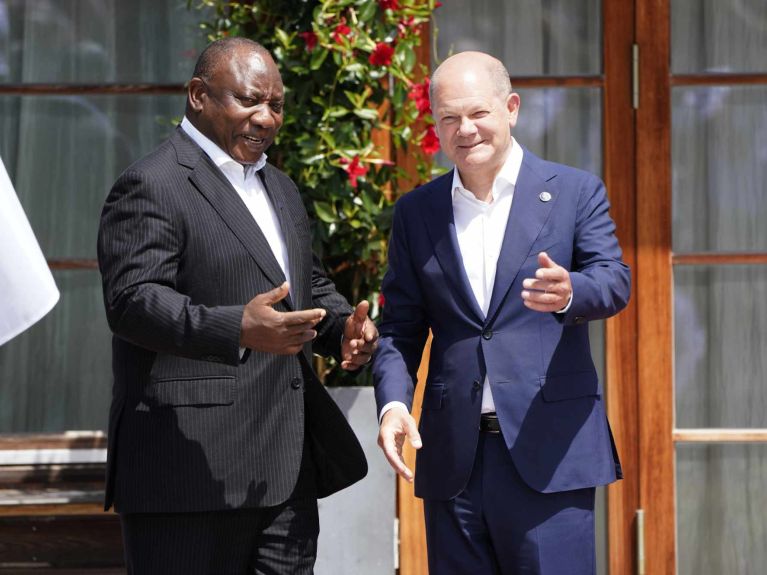A partnership for cleaner energy
South Africa is keen to implement an energy transition. Germany and other countries are supporting its efforts with a new partnership.

Even a hundred years after their joint discovery, the German engineers Franz Fischer and Hans Tropsch remain highly relevant to South Africa. Sasol’s plant in Secunda still applies their method of converting solid coal into liquid fuel on a larger scale than anywhere else in the world: each day, more than 25 million litres of diesel are produced by the coal liquefaction facility. Over the course of nearly 70 years, Sasol has manufactured more than 300 billion litres of fuel. This laborious process comes at a cost that is not measured only in South African rand, however: generating carbon emissions of almost 60 million tons per year, the Sasol plant is also one of the world’s biggest carbon dioxide polluters.
This cannot be allowed to continue in an era of climate change – nor can the fact that South Africa generates more than 80 percent of its electricity by burning coal. The energy partnership that Germany has entered into with South Africa aims to put an end to these two “original sins” of power and fuel production. Germany, France, the UK, the USA and the European Union therefore agreed at the climate summit in Glasgow in November 2021 to mobilise 8.5 billion US dollars, within the framework of a Just Energy Transition Partnership (JETP), to support South Africa with loans and subsidies. The phase-out of coal and the expansion of renewable energies will be promoted, while giving special consideration to disadvantaged social groups such as mine workers, women and young adults. Boasting on average 2,800 hours of sunshine per year and gusty winds on its Atlantic coast, South Africa certainly meets the prerequisites for green energy production. The objective of the JETP is to set the country’s energy transition in motion.

Attention is now focused on projects that could drive the switch from coal to renewable energy sources. Such as the plan by Sasol and the Helmholtz-Zentrum Berlin (HZB) to use the Fischer-Tropsch process that was invented in South Africa not to covert coal into diesel, as has been the case hitherto, but to turn hydrogen into kerosene. Rather than releasing carbon, the process actually requires it. So long as the hydrogen is produced in a climate-friendly manner, the method is not only climate-neutral but actually climate-positive. Producing green hydrogen is also by no means impossible at the sunny and windy Cape of Good Hope. The technology and investment transfer this requires is also coming courtesy of the German-South African energy partnership.
Dieses YouTube-Video kann in einem neuen Tab abgespielt werden
YouTube öffnenThird party content
We use YouTube to embed content that may collect data about your activity. Please review the details and accept the service to see this content.
Open consent formYou would like to receive regular information about Germany? Subscribe here:



